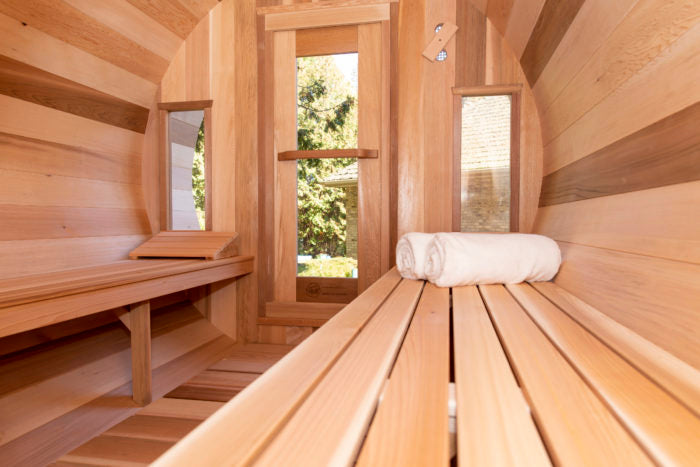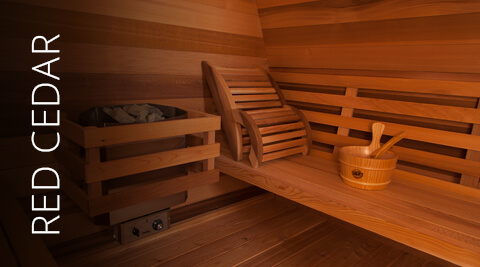Traditional Sauna - Truths
Traditional Sauna - Truths
Blog Article
Rumored Buzz on Traditional Sauna
Table of ContentsAn Unbiased View of Traditional Sauna10 Easy Facts About Traditional Sauna ExplainedIndicators on Traditional Sauna You Should KnowThe smart Trick of Traditional Sauna That Nobody is Talking AboutNot known Details About Traditional Sauna
Many of the weight shed in a sauna is water loss and is re-gained upon rehydrating. Without an uncertainty sauna can be an essential component of a healthy weight loss program. To look at the differences in between traditional and IR saunas, I will divide these into proven, theoretical, and fabricated differences.Hence, the hottest factor in the saunawhich is at the ceiling directly over the sauna heateris commonly in between 185 and 190 F. Claims that a conventional sauna goes beyond 200 F is merely not true and not suitable for electrical saunas sold in the US. The temperature level for a far-infrared sauna is generally set in between 120 and 140 F; nevertheless, unlike the typical sauna, the goal in and IR space is not to attain a heat.
Due to this, the temperature difference is nearly irrelevant, given that profuse sweating results in both sauna kinds, yet the approach of warming the body is different. In an IR sauna the bather will really feel warm and will sweat profusely, yet at much reduced temperatures (Traditional Sauna). Thus, if the objective is to invest longer time periods in the sauna, the IR sauna is a great choice
When a typical sauna has been effectively heated up, the sauna wall surfaces are warm, the air temperature has actually achieved set temperature level and the rocks are super heated. As an interesting side note, the warmed wall surfaces and the rocks are producing far-infrared heat, integrated with the heated air, to produce an "enveloping warm".
Not known Incorrect Statements About Traditional Sauna

When the heat is accomplished, the aspects cycle on and off to maintain the high temperature. A lot of conventional sauna customers take pleasure in putting water over the rocks to produce heavy steam to increase sauna humidity levels. The advantages of pouring water over the rocks include: making the room much more comfy, dampening the nasal flows, and enabling the use of aromatherapy by blending necessary oils with the water.

When the energy gets in the body, it causes the body temperature level to raise and ultimately causes sweat. In an infrared sauna it's important for the emitters/heaters to stay on virtually regularly. Since there is no mass of rocks to keep warmth, the sauna will certainly cool if the emitters turned off.
As mentioned above, the sauna bather in an infrared space wishes to position himself before operating emitters to obtain optimal take advantage of the heat. The heating time for both areas can be really various, depending upon exactly how the areas are made use of. For a conventional sauna, a bather should permit 30-40 mins for the room check here to accomplish a wanted temperature level and to correctly pre-heat the rocks.
More About Traditional Sauna
A well constructed sauna will typically attain a temperature of 150-160 F in concerning 30-40 mins. For hotter temperatures, the room site may need to heat for a longer duration.

Typical saunas tend to be larger (for this reason use even more electricity) than infrared saunas, although conventional saunas are definitely readily available in one and 2 person dimensions also. For a two-person conventional sauna, 5x6 or 5x7 dimension is most prominent. The top bench can pleasantly seat two or three people and is additionally enough time to exist down throughout the sauna session.
The Only Guide for Traditional Sauna
The ordinary expense per kWH of electrical power in the U.S. is approximately $0.11, so a 4.5 kW heating unit will certainly cost roughly $.50 to run for one hour, if the heater runs continually for one hour. Normally a sauna heating unit will certainly compete 75% of the first hour and 50% of succeeding hours on because the aspects cycle once the established temperature level is achieved.

Ultimately, there is a seldom discussed distinction in the social experience in between both areas. While our society has lost a few of the social benefit of the traditional sauna experience, it can be really socially satisfying (Traditional Sauna). From family members time in the sauna, to heart-felt these details discussions with better halves, to sauna partiesthe traditional sauna experience can bring about intimate interacting socially
The Only Guide for Traditional Sauna
Many greater end infrared rooms consist of tinted light therapy, audio systems and full-glass fronts.
Report this page